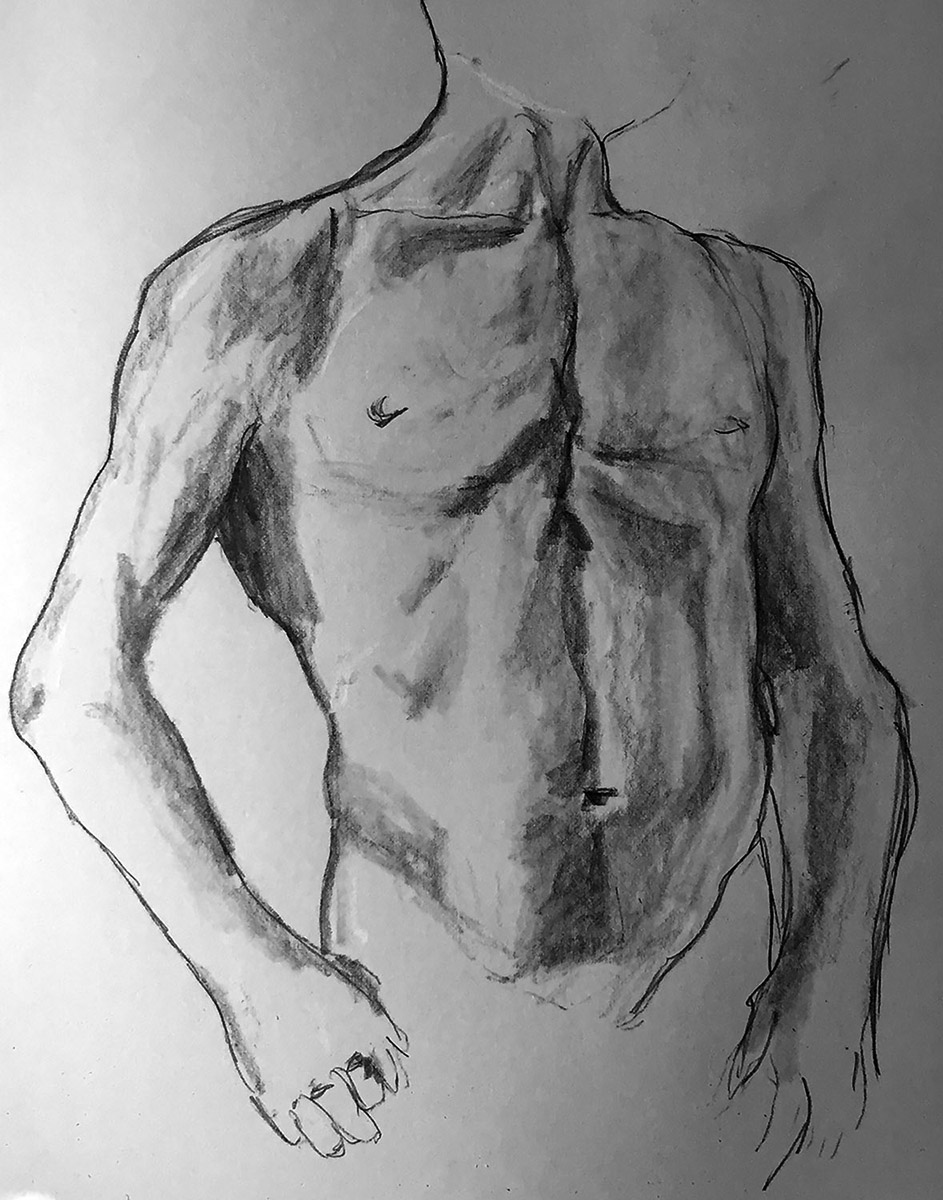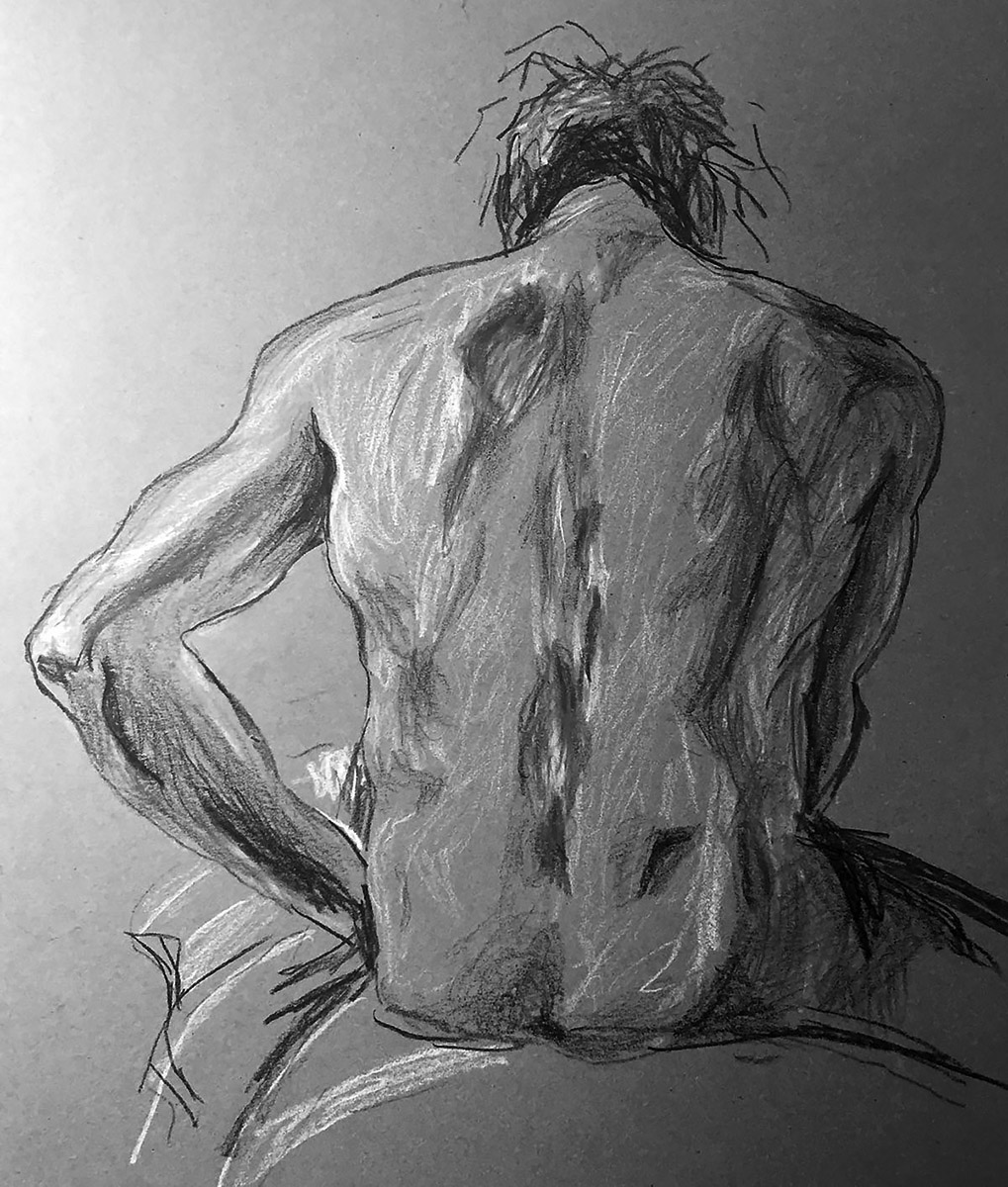
The black and white Prismacolor® pencil drawing above was copied from a work by the Italian artist Giovanni Battista Tiepolo. Now we just refer to him as Tiepolo, since we are not very formal in these casual modern times. Tiepolo’s drawing was done in 1752 with white and red chalk on blue tinted paper. The drawing is in the collection at the Staatsgalerie in Stuttgart, Germany. In German, the medium that he used is called “Rötel; weiße Kreide on Papier” which Google translated to “rubella; white chalk on paper”. You read that correctly. It was drawn with rubella. It was drawn with a contagious viral infection that causes red rash. I know what you are thinking. This can’t be right. So I did some research. Real honest to goodness research and it turns out that “Rötel” is a Japanese manufacturer of high end audio and video equipment. Of course, that can’t be right either. Then I realized I forgot to include a umlaut when I searched. Finally, I entered just the word “Rötel” into google translate with the umlauts and it said it was “red chalk”.
That sounds about right.
Now let’s talk about the Giovanni Battista Tiepolo drawing in question. The standing male half-nude drawing is believed to be a preparatory sketch for the painting entitled “The Death of Hyacinthus” finished in early 1753. The final figure is in more of a reclined position. Tiepolo completed the large painting with the help of his two sons, Lorenzo and Giandomenico. The painting is part of a series illustrating the story from Ovid’s Metamorphoses. It pertains to the love of the immortal god Apollo to the mortal human Hyacinthus. Apparently, Hyacinthus was trying to throw a discus, accidentally hit himself in the head and died. There are different accounts on how he would be able to create such a blunder but the result was the same. He died from throwing a discus at his own head. Apollo then tried unsuccessfully to bring him back to life. It was then that Apollo had the great idea to turn Hyacinthus into a flower. I am just going to assume that the flower is what we now call a Hyacinthus. I would try to verify that but I really want to finish this blog.

